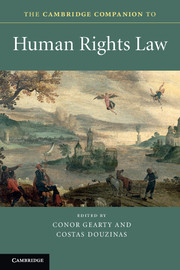Book contents
- Frontmatter
- Contents
- Preface
- Notes on contributors
- Acronyms and abbreviations
- Introduction
- Part I All kinds of everyone
- Part II Interconnections
- Part III Platforms
- Part IV Pressures
- 14 Winners and others: accounting for international law’s favourites
- 15 Resisting panic: lessons about the role of human rights during the long decade after 9/11
- 16 What’s in a name? The prohibitions on torture and ill treatment today
- 17 Do human rights treaties make enough of a difference?
- Index
- References
17 - Do human rights treaties make enough of a difference?
from Part IV - Pressures
Published online by Cambridge University Press: 05 December 2012
- Frontmatter
- Contents
- Preface
- Notes on contributors
- Acronyms and abbreviations
- Introduction
- Part I All kinds of everyone
- Part II Interconnections
- Part III Platforms
- Part IV Pressures
- 14 Winners and others: accounting for international law’s favourites
- 15 Resisting panic: lessons about the role of human rights during the long decade after 9/11
- 16 What’s in a name? The prohibitions on torture and ill treatment today
- 17 Do human rights treaties make enough of a difference?
- Index
- References
Summary
In recent years, one of the most intense and interesting debates among mainstream scholars of international law has been whether human rights treaties ‘make a difference’. Oona Hathaway kicked off these controversies with a pathbreaking and subversive article suggesting that indeed they do make a difference – sometimes for the worse. Hathaway did not mean to bring a defeatist realism to scholarship, along the lines of the conservative scholars with whom liberals perpetually struggle. Instead, in documenting how easy it has been for states to gain the expressive benefits of treaty ratification without taking legal obligations to heart, with sometimes negative consequences for rights outcomes, Hathaway hoped to prompt a more sophisticated international regime. For example, she suggested, making ratification tougher or probationary for states would filter out or at least pose barriers to the ‘insincere ratifiers’ and thus make aggregate positive outcomes more likely.
Hathaway’s modest scepticism – though offered for the sake of the progressive realisation of human rights by means of international treaty law – seemed scandalous to some. In any case, now Beth Simmons is regarded as having ‘settled’ the debate about whether human rights law has positive effects. As one reviewer noted of her well-received book, Mobilizing for Human Rights, it ‘has closed the chapter on whether human rights treaties can make a difference.’ More broadly, it has been widely recognised as the most significant work in the field in many years. It is supposed not only to put the concern about insincere ratifiers in its place and thus to clamp down on the potentially creeping worry Hathaway introduced.
- Type
- Chapter
- Information
- The Cambridge Companion to Human Rights Law , pp. 329 - 347Publisher: Cambridge University PressPrint publication year: 2012
References
- 4
- Cited by



